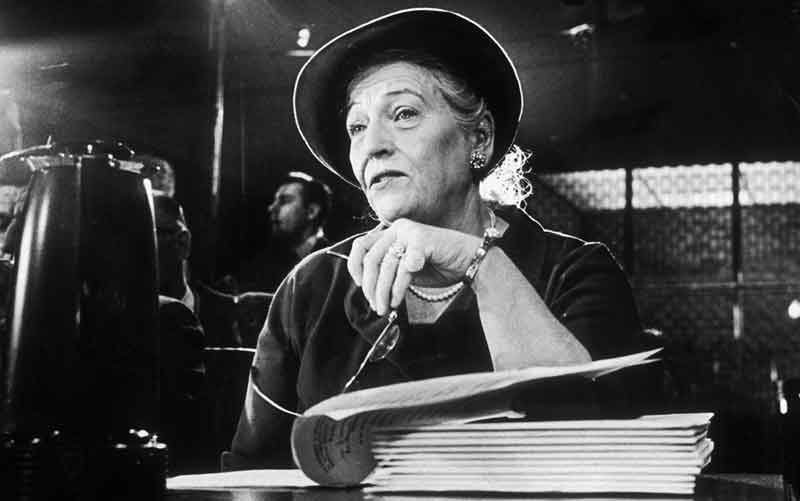“As a participant observer of the Chinese postwar and pre-war agrarian sector, I had the chance of rediscovering some of the latent human conditions, which enabled me to set most of my narratives in that social milieu,” said the 1938 Nobel Laureate Pearl S Buck (1892 – 1973) in her Nobel address.
 Pearl with her lesser known name ‘S’ for ‘Sysdestricker’ happened to be America’s most distinguished woman of letters ad the winner of both Pulitzer prize (1932) and Nobel Prize for literature in 1938.
Pearl with her lesser known name ‘S’ for ‘Sysdestricker’ happened to be America’s most distinguished woman of letters ad the winner of both Pulitzer prize (1932) and Nobel Prize for literature in 1938.
Her most popular novel ‘The Good Earth’ happened to be a narrative translated so far into 48 languages around the world. This work not only helped the world to gauge the susceptibilities of the traditional agrarian culture in China, but a mirror of the most agrarian societies in the East. Pearl S Buck was thoughtful to her parents who happened to visit China in the early part of the 20th century as missionaries and social workers. As Pearl reads this as a god-given mission for her creative activities.
While the parents were busy with their social activities, Pearl was engaged in the function of reading her father’s books, a part of which was kept n backyard barn. Pearl would go there there during the morning hours, as a way of life in order to browse the books written by English writers like Dickens and Hardy. According to notes kept by Pearl from her childhood days, paved the way for her to know herself, the latent skills of writing as an observer. She kept abreast ith the games played by Chinese girls and boys of her age not as a foreigner but as a participant ho did not feel the alienation of human conditions. As she records the affection resulted in the lifelong devotion to children especially the lost children, the orphaned the handicapped, those of mixed parentage etc.
In 1949, after receiving the Nobel award Pearl founded welcome house which locates home for orphans of mixed Asian – American heritage. As soon as she found the home she raised nine adopted children in addition to her own. She told the world at large in one of her essays that her own daughter, a child who did not grow. But in the Welcome House, she grewup with other children of her age. She too founded her Pearl S Buck Foundation not as a ersnal belonging, but as a philanthropic activity. Her earnings from books were geared tot the well being of those who mattered. She recorded at one point: My books were written by me in order to release myself from a burden. Now they belong to the world not as a personal belonging but as a public property.
Pearl S Buck emphasizes the fact that the philanthropic activities in the war torn world should centre round rescuing children left in foreign lands by American servicemen. That as a forgotten factor, which too became the central then to some of the novels like Anniversary, Sons and Command the Morning. In the novel titled Command the Morning, Pearl S Buck has written about the most awesome achievements of our time: the splitting of the atom and the manufacture of ht atomic bomb. She takes the reader into lives of scientists responsible for the creation of the fearful weapon and shows the greatest disaster that ever happened to the humans.
Pearl S Buck sensitively captures in the work the sequence of events in the creation of the bomb and the way led to the disaster. Burton Hall, the head of the project and his ife Mollie, his young assistant Stephen Coast and his wife Helen and the skilful, intelligent young scientist Jane Earl, attracted to both males, yet afraid to allow herself to love either makes the narrative line more sensitive. The human lovelorn characters are gradually shifted into an inhuman action.
The narrative bears a religious epitaph which stands as an epitome.
Gird up now thy loins like a man
For I will demand of them
And answer thou me
Where was thou when I laid foundations of the Earth?
Declare, if thou has understanding
Then the lord answered Job out of whirlwind and said:
Who hast laid the measures thereof
If thou knowest?
Or who hath stretched the line upon it?
Whereupon are the foundations there of fastened?
Or who laid the cornerstone thereof?
When the morning stars sang together?
And all the sons of god shouted the joy?
The penetrative narrative vision of Pearl Buck surpassed the mere plotting of a story or giving vent to a suspense. Instead, she makes the reader grip into a human situation packed with history and event?
“The year was 1940. In September of 1939, England had declared war against Germany. But it was spring again, and Americans were still safe,” Yes Burton was thinking, we are still safe This is how the novel Command triggers off into a tragedy of human existence. Pearl shows how the common man drawn to a grave tragedy while the scientist highly paid are engaged in scientific activities which drive humans to that disaster.
As the epilogue to the work Pearl S Buck laid down what a physicist named Sam Allison says:
Nuclear power liberated;
The creation of Plutonium
1943 – 1944
Hail miracle, which these dreadful years
We built urged on by hopes and goaded by fears
Hail man made star
God help us how aspire
To fan spent embers left from cosmic fire.



Add new comment